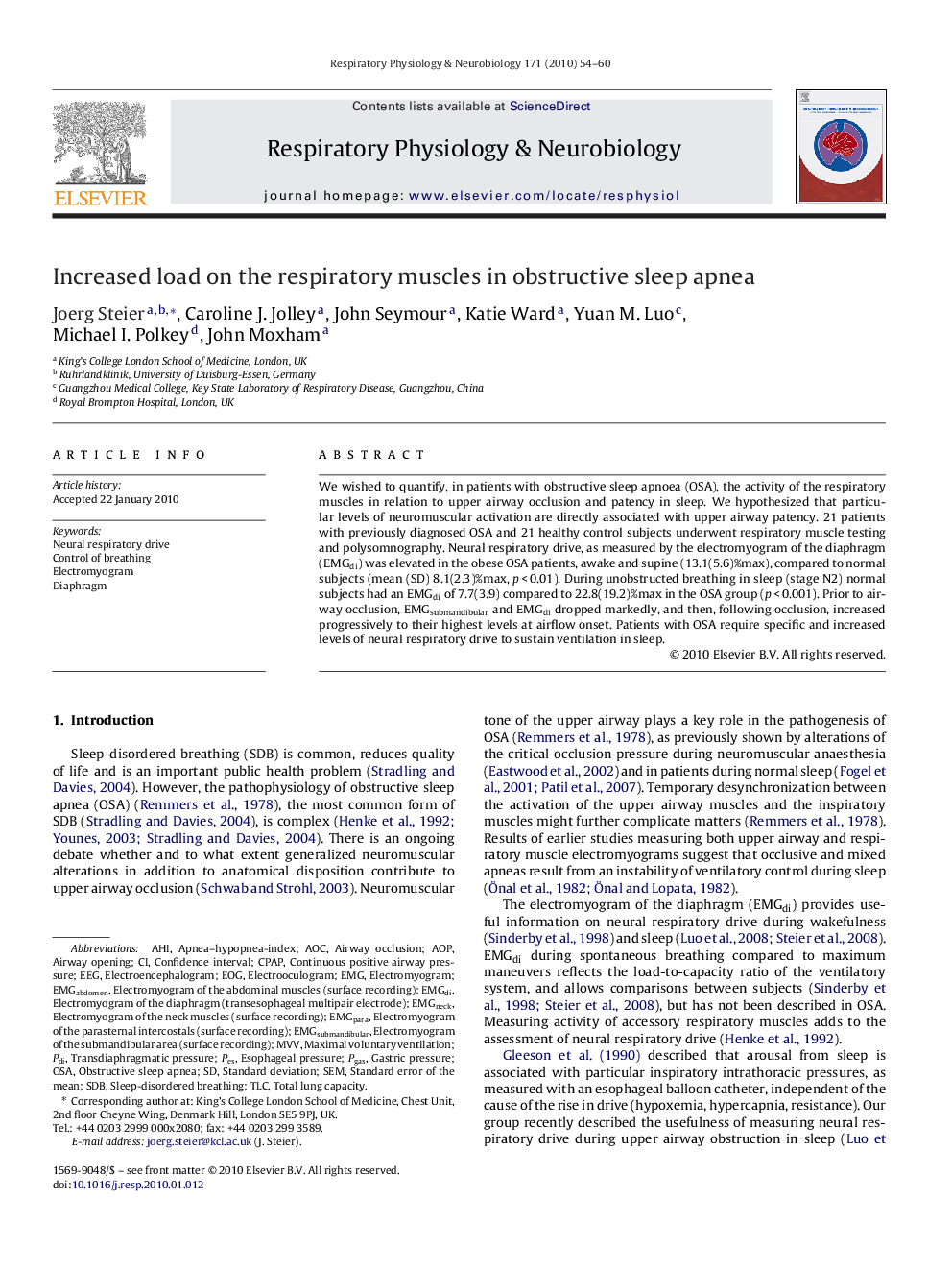| Article ID | Journal | Published Year | Pages | File Type |
|---|---|---|---|---|
| 2847711 | Respiratory Physiology & Neurobiology | 2010 | 7 Pages |
We wished to quantify, in patients with obstructive sleep apnoea (OSA), the activity of the respiratory muscles in relation to upper airway occlusion and patency in sleep. We hypothesized that particular levels of neuromuscular activation are directly associated with upper airway patency. 21 patients with previously diagnosed OSA and 21 healthy control subjects underwent respiratory muscle testing and polysomnography. Neural respiratory drive, as measured by the electromyogram of the diaphragm (EMGdi) was elevated in the obese OSA patients, awake and supine (13.1(5.6)%max), compared to normal subjects (mean (SD) 8.1(2.3)%max, p < 0.01). During unobstructed breathing in sleep (stage N2) normal subjects had an EMGdi of 7.7(3.9) compared to 22.8(19.2)%max in the OSA group (p < 0.001). Prior to airway occlusion, EMGsubmandibular and EMGdi dropped markedly, and then, following occlusion, increased progressively to their highest levels at airflow onset. Patients with OSA require specific and increased levels of neural respiratory drive to sustain ventilation in sleep.
